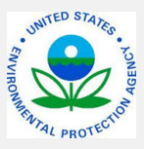First published on India’s CHS-Sachetan website
Last year Richard Bruce, who has suffered severely for many years following exposure to pesticides in the course of his work, sent news of research into links between diabetes and exposure to organophosphate, the most frequently and largely applied insecticide in the world, undertaken by a team from Madurai Kamaraj University, published in Genome Biology. It is accessible to all readers and may be accessed here.
He now draws attention to the Hindu’s report of a food poisoning incident in Navi Mumbai which led to the death of three children and 40 people falling ill (200 according to the Hindustan Times).
Dr. Ajit Gawli, Raigad district civil surgeon, said “The serum test reports of two patients indicated presence of organophosphate compound in the food. The cholinesterase enzyme level was found to be around 800, which ideally should be around 1,200. It does confirm the presence of organophosphate compound found in insecticides and pesticides. After the reports of the serum of the deceased come in, we can confirm the saturation of the compound and what exactly the chemical was.” The food samples have been sent to a forensic science laboratory at Kalina and the Food and Drug Administration (FDA) for further analysis.”
An American campaign
Richard earlier sent news of a press release issued from Portland, Oregon, by the Center for Biological Diversity, a national, non-profit conservation organization with more than 990,000 members and online activists dedicated to the protection of endangered species and wild places.
 It reported that group of farmworkers, child-safety and environmental advocates sent a letter to the government’s Environmental Protection Agency urging it to ban seven organophosphate pesticides, currently under review, that are used on crops such as corn, cotton, watermelon and wheat. It was submitted in response to the EPA’s request for public comments on new releases of human-health and ecological risk assessments for organophosphate insecticides.
It reported that group of farmworkers, child-safety and environmental advocates sent a letter to the government’s Environmental Protection Agency urging it to ban seven organophosphate pesticides, currently under review, that are used on crops such as corn, cotton, watermelon and wheat. It was submitted in response to the EPA’s request for public comments on new releases of human-health and ecological risk assessments for organophosphate insecticides.
“Every spring season, children around the U.S. are facing low-dose exposure to this dangerous chemical,” says a Minnesota mother who was sickened, along with her infant son, by chlorpyrifos. “It is in the air they breathe, the water they drink, and the food they eat,” she adds. “By leaving this chemical on the market, we are gambling with the lives of children. It is stealing their futures from them and increasing the amount of health care dollars they will need for treatment.”
Chemical & Engineering News reported that no ban was imposed; there was ‘pushback’ from Dow Sciences and others in the chemical industry.
 Leonardo Trasande, an internationally renowned authority on children’s environmental health, in a study published in 2017 writes:
Leonardo Trasande, an internationally renowned authority on children’s environmental health, in a study published in 2017 writes:
“A regulatory ban was proposed, but actions to end the use of one such pesticide, chlorpyrifos, in agriculture were recently stopped by the Environmental Protection Agency under false scientific pretenses”.
“Strong evidence now supports the notion that organophosphate pesticides damage the fetal brain and produce cognitive and behavioral dysfunction through multiple mechanisms, including thyroid disruption.
o

Recent Comments